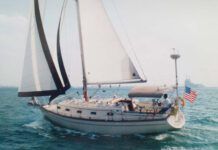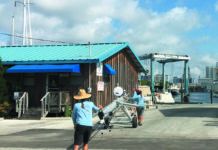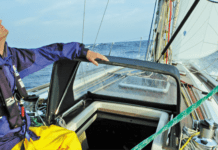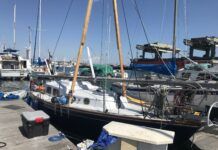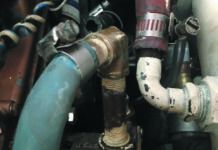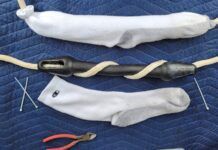The accompanying illustrations show the various situations in which “drudging” can be put to work. Some of these, I’ve put to use on more than one occasion.
- Stopping on a long bulkhead. You may be able to sail parallel to a long open section of bulkhead using the genoa, but then there is the matter of stopping. Only a small bit of sail should be used, and that will be let free or doused some distance from the bulkhead. Dragging a chain, kellet, or anchor will stop the boat, the choice based on the amount of wind and weight of the boat. Too much is better than too little.
- Sailing into a slip. First, be realistic about the conditions, your ability, the crew on board, and the situation. I have sailed right into my slip several times, but only with intimate knowledge of my boat, the surroundings, and in perfect conditions. Another time the conditions were not perfect (too much wind), so I anchored very close to the slip and used two lines looped around pilings to warp the boat in singlehanded (see illustration). It took 20 minutes, but went smoothly and without strain.
- Floating Dock. Having learned my lesson about tides running under floating docks, I was more cautious the next time I was faced with this situation. My engine was operating just fine, but the slot was only about 10 feet longer than my boat and I feared the tide slamming me into the dock again. The solution was to lower an anchor off the non-dock side while still about 100 feet from the dock. The rope rode was turned loosely around the mid-ships cleat. As per usual, I maneuvered the boat parallel to the slot, while at the same time a crewman controlled slack in the anchor rode. As the tide began to push the boat sideways, the crew firmly snubbed the anchor line while I jockeyed the throttles to keep the boat parallel and centered in the space. In fact, we left the anchor line in place over night, since a storm was approaching and a beam anchor would help hold us off the bulkhead if waves built.
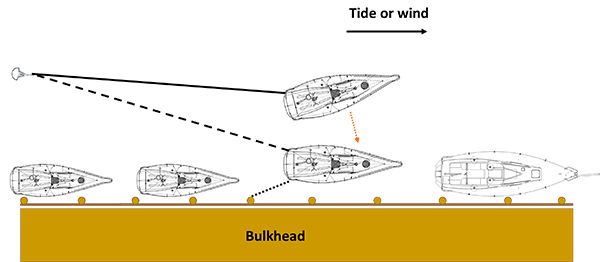
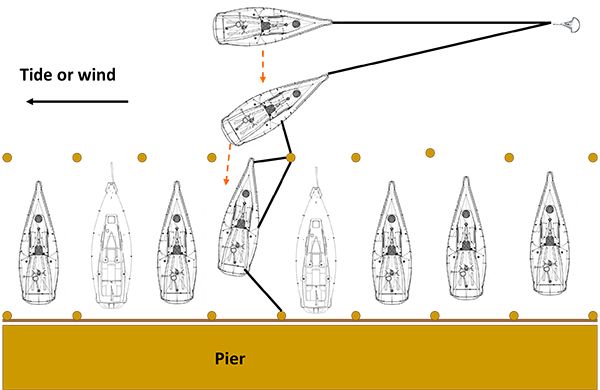

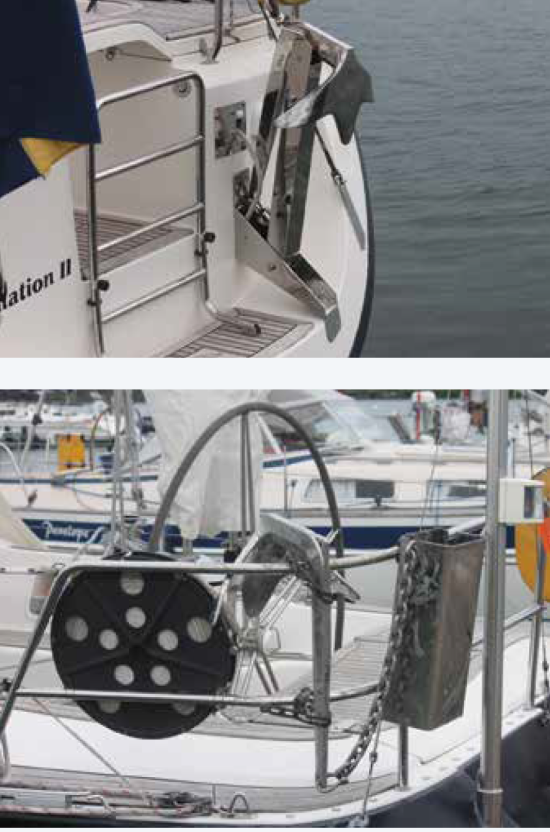
Conclusion
Plan ahead. None of this is complicated, but putting it together under fire is a recipe for disaster. Try some of these methods in the open to learn how your boat responds. When a challenge arises, take as much time as you need to work out a safe solution. Back in the day maneuvering by oar, anchor and warp was common practice.



